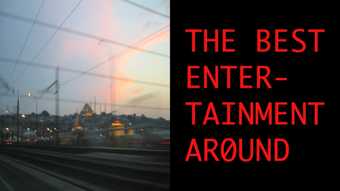
Young-Hae Change Heavy Industries, TEASER 2010
Young-Hae Chang Heavy Industries
Young-Hae Chang Heavy Industries were among the first artists to explore the possibilities of making internet or net art
Following the launch of web browsers in the 1990s, artists began to experiment with the internet as a medium for creating new art experiences. The web allowed artists to exhibit their work without the endorsement of an institution. Then, as now, net art transcended geographical and cultural boundaries, while also challenging prejudice and aesthetic conformity within the art world.
Young-Hae Chang Heavy Industries (YHCHI) is a collective consisting of the Korean artist Young-Hae Chang and the North American artist Marc Voge. They make digital text-based works with original music soundtracks. YHCHI draw on concrete or abstract poetry, narrative literature and experimental cinema. Their work explores a wide range of social and political issues, from the excess and futility of the art world, to the dangers of climate change.
For over 20 years, YHCHI’s primary medium was the multimedia software platform ‘Flash’. This software was often used to create web-based animations. The artists have described it as ‘cheap and easy’. The accessibility of Flash resonates with the open unrestricted values of net art. In the words of YHCHI: ‘All you need is your own website and an Internet connection, and you no longer need things like an artists’ studio. You no longer need to be in London.’
YHCHI continue to adapt their work for different contexts, while also responding to shifts in technology. Today these works can be experienced both online and in a gallery setting. The process of conserving and displaying net art is explored as part of Reshaping the Collectible: When Artworks Live in the Museum, an Andrew W. Mellon funded research initiative at Tate.
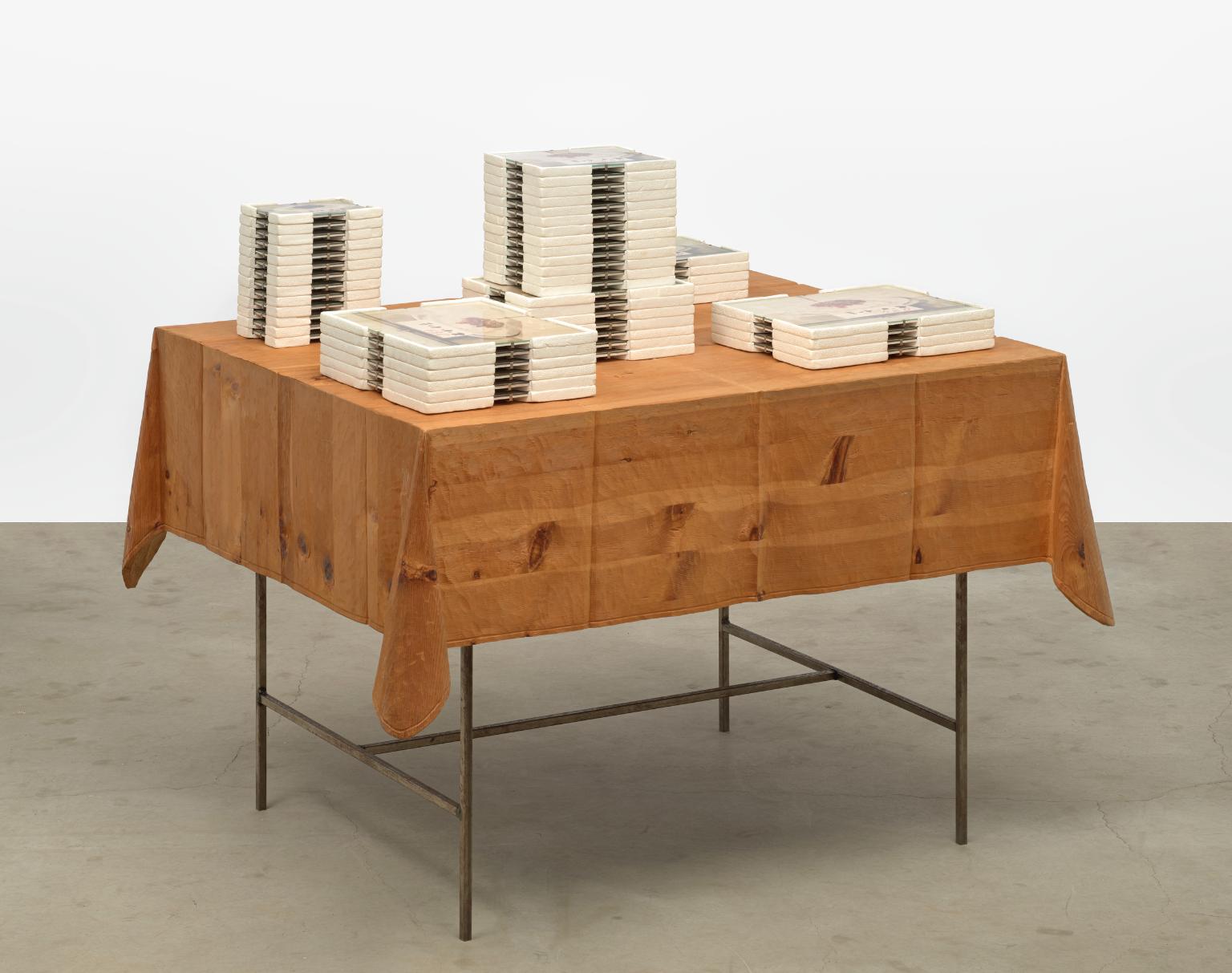
Martin Kippenberger, Under the Eiffel Tower in Tokyo Lauwarm 1990
Kippenberger commissioned this wooden tablecloth from traditional woodcrafters in Tyrol, Austria. On top he placed photographs of a model of spaghetti he took near the Tokyo Tower, Japan. The spaghetti model is an example of the Japanese custom of shokuhin sampuru, where restaurants display replicas of food, made to advertise meals to customers. By creating a sculpture from reproductions of other of people’s craftwork, Kippenberger questions the importance of originality and the artist’s hand in producing art.
Gallery label, August 2024
1/26
artworks in Young-Hae Chang Heavy Industries
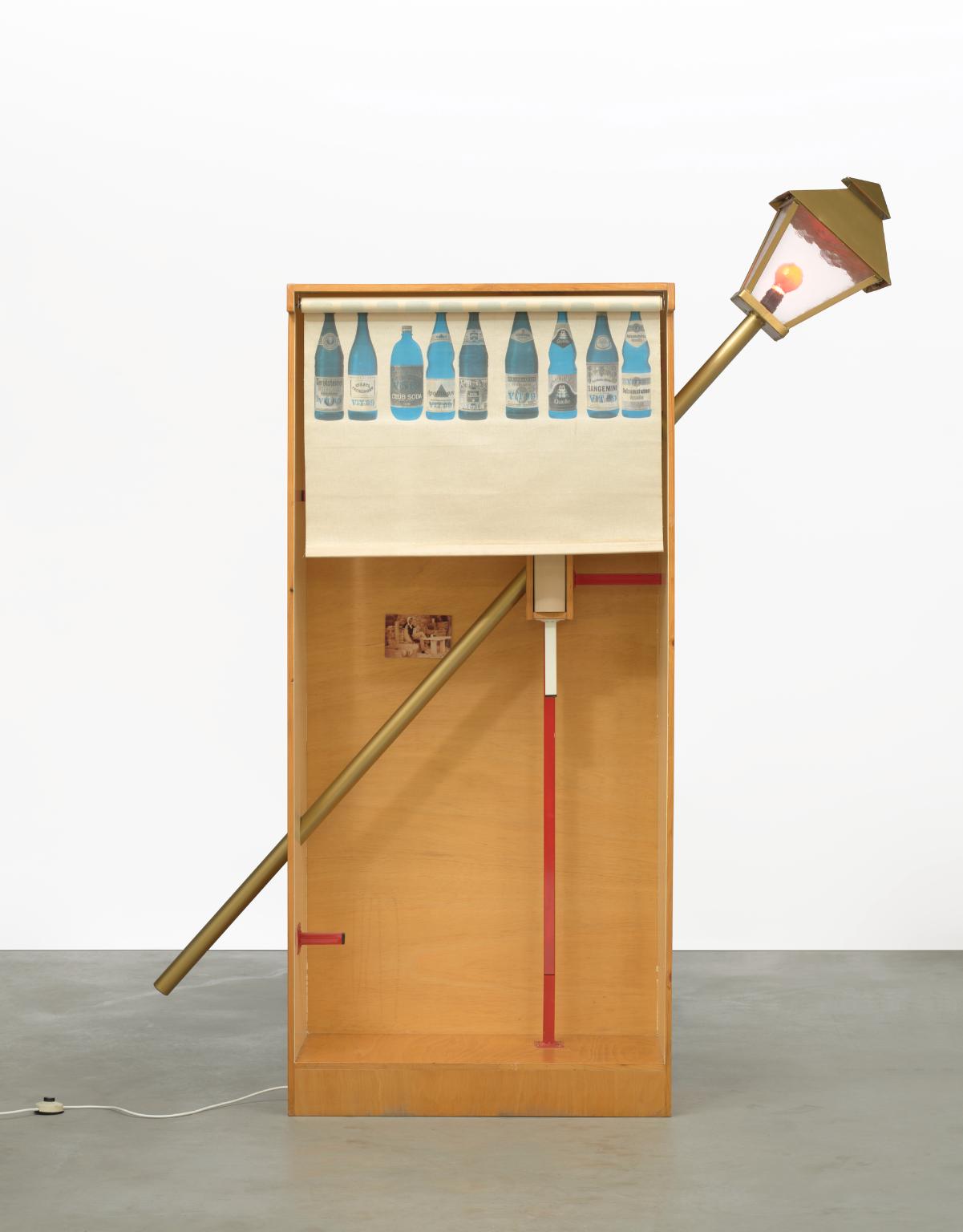
Martin Kippenberger, Untitled 1989
This sculpture combines elements from two Kippenberger series, the ‘Peter sculptures’ and his ‘drunken lamps’. Here, an angled lamp post skews a bookcase-like structure, while taped to the back is a photo of Kippenberger picking his nose. Kippenberger’s Peter works adopted a DIY aesthetic, using found materials and bits of furniture, often leaving mistakes deliberately visible. They were made in part as a response to the meticulous craftsmanship seen in lots of sculpture. Around this time, he also produced works with bent and wonky lampposts.
Gallery label, August 2024
2/26
artworks in Young-Hae Chang Heavy Industries
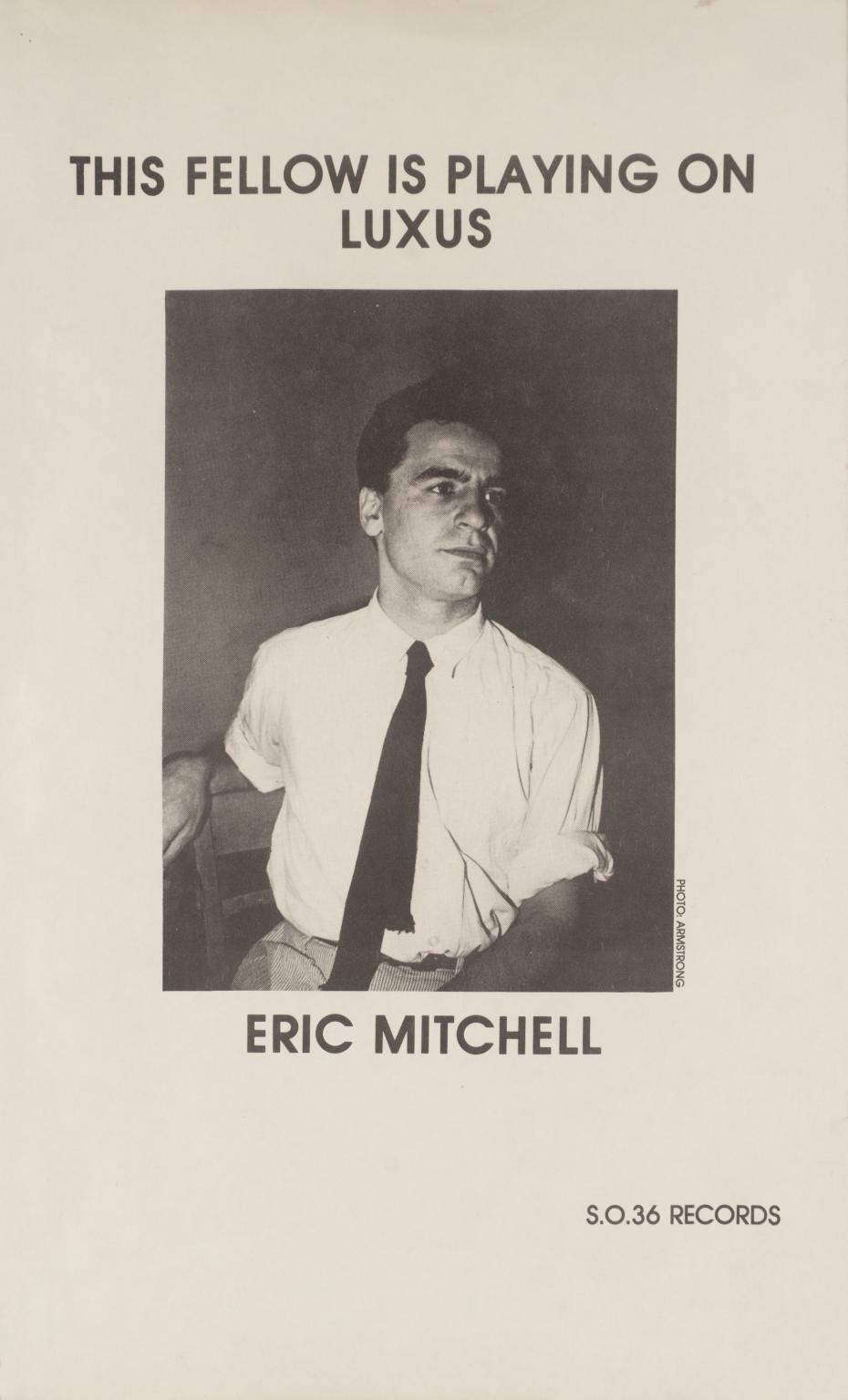
Martin Kippenberger, This Fellow is Playing on Luxus 1979
This poster was produced in 1979 to promote ‘Luxus’, the first single of German artist Martin Kippenberger’s punk band Grugas. The ‘fellow’ depicted is band member Eric Mitchell.
3/26
artworks in Young-Hae Chang Heavy Industries

Martin Kippenberger, This Guy is playing on Luxus 1979
This poster was produced in 1979 to promote ‘Luxus’, the first single of German artist Martin Kippenberger’s punk band Grugas. The ‘guy’ depicted is fellow band member Akim Schaechtele.
4/26
artworks in Young-Hae Chang Heavy Industries
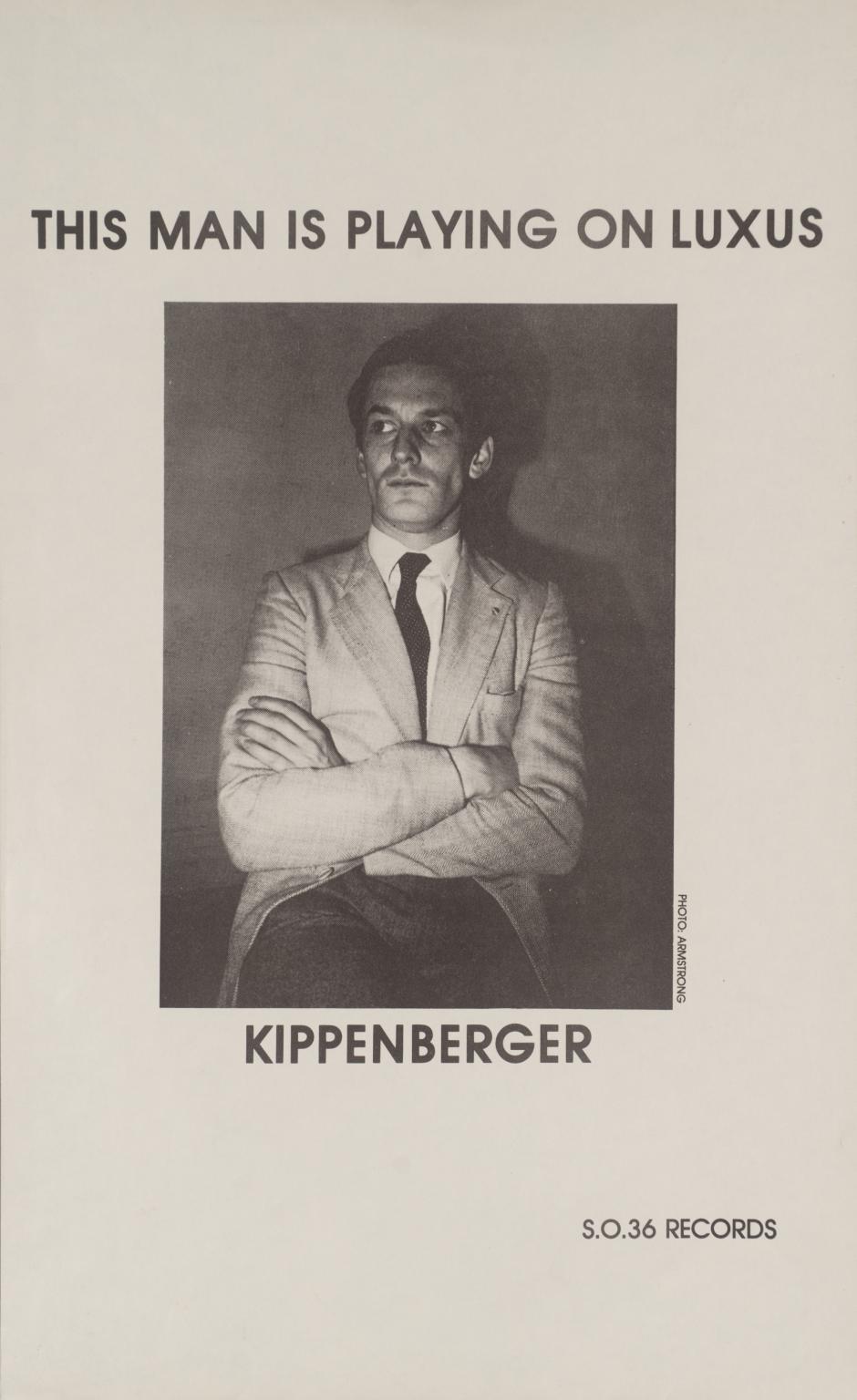
Martin Kippenberger, This Man is Playing on Luxus 1979
This poster was produced in 1979 to promote ‘Luxus’, the first single of German artist Martin Kippenberger’s punk band Grugas. The ‘man’ depicted is Kippenberger.
5/26
artworks in Young-Hae Chang Heavy Industries
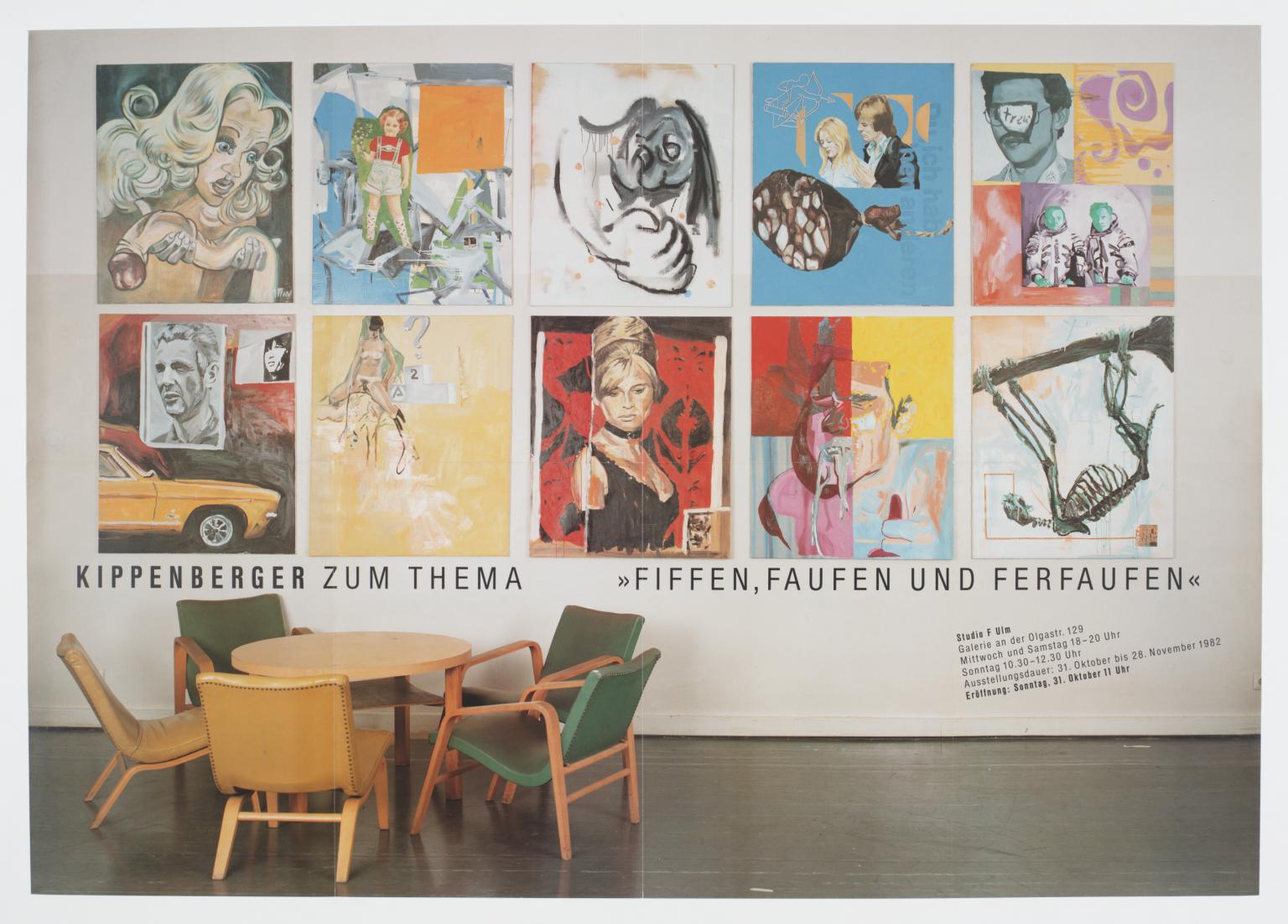
Martin Kippenberger, Kippenberger on the Theme of Fucking, Boozing and Selling 1982
This poster was produced on the occasion of an exhibition of works by German artist Martin Kippenberger, held at the Studio F in Ulm, Germany, in 1982.
6/26
artworks in Young-Hae Chang Heavy Industries

Martin Kippenberger, If You Need One, You Have to Bring One with You 1985
Though prolific as a painter, sculptor, musician and writer, the 178 posters created by German artist Martin Kippenberger throughout his career form a significant body of work. Normally created as screen prints or lithographs in standard advertisement sizes, they were used to promote a wide variety of events from art exhibitions to upcoming parties. From 1986 Kippenberger began to group his posters into folios, though these were united more by date than by similarity of style or function. This work forms part of the first folio, T.Ü., which stands for ‘Title Überflussig’ (Title Unnecessary). Published in 1986 in an edition of sixteen, each folio contained seventeen posters made between 1984 and 1986.
7/26
artworks in Young-Hae Chang Heavy Industries
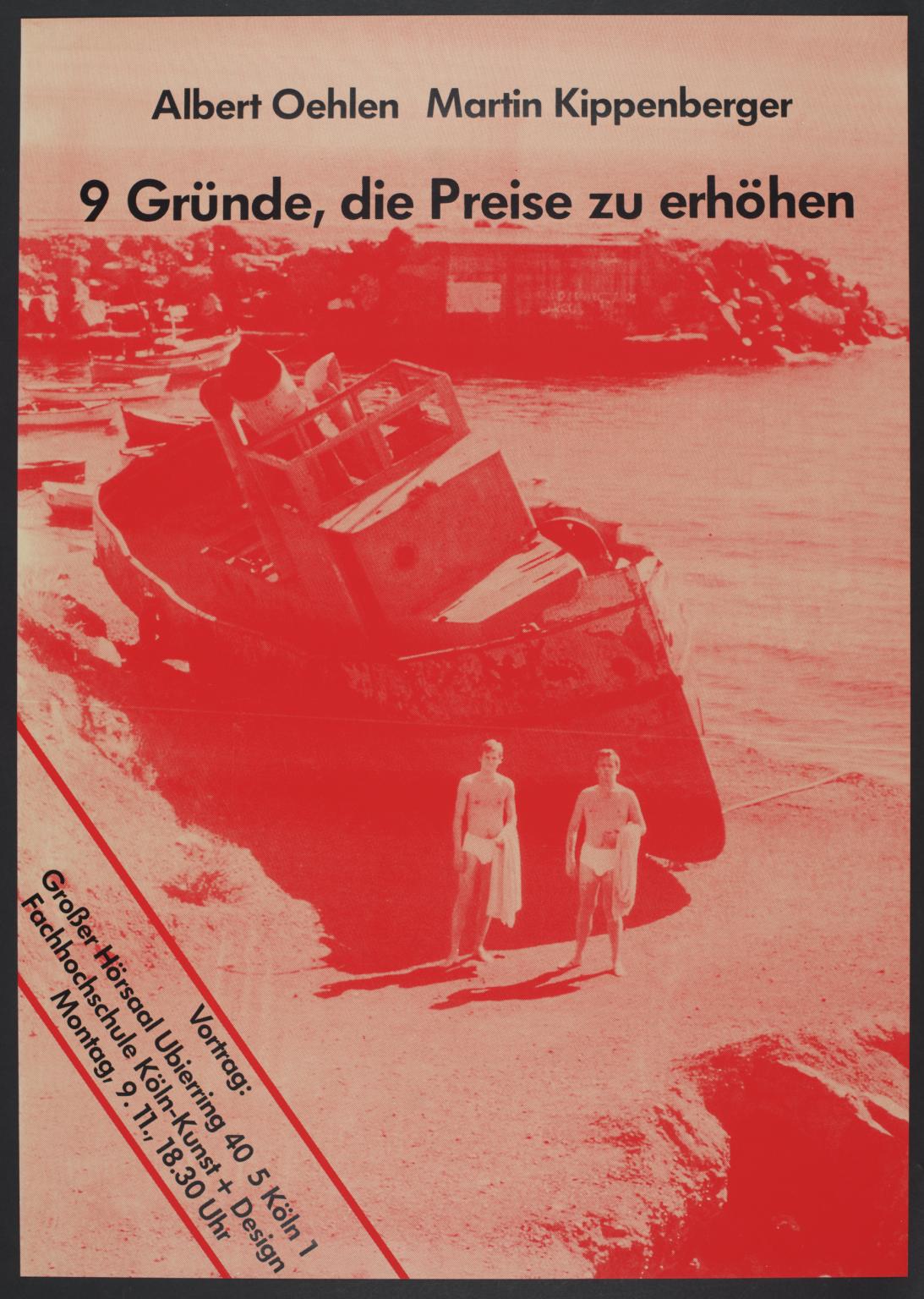
Martin Kippenberger, Nine Reasons to Raise the Prices 1987
This poster was produced to promote a lecture given by Martin Kippenberger and fellow German artist Albert Oehlen at the Art and Design School in Cologne on 9 November 1987. Standing in front of a boat that has run ashore, Oehlen and Kippenberger pose in oversized white underpants, with dressing gowns hanging over their left arms. The scene consciously recreates American photographer David Douglas Duncan’s 1962 photograph of the artist Pablo Picasso wearing similar attire, which became a symbol for Kippenberger of masculinity, the power of artistic fame, and the inevitability of aging (see, for example, I Could Lend You Something, But I Would Not Be Doing You Any Favours 1985, Tate P79090).
8/26
artworks in Young-Hae Chang Heavy Industries
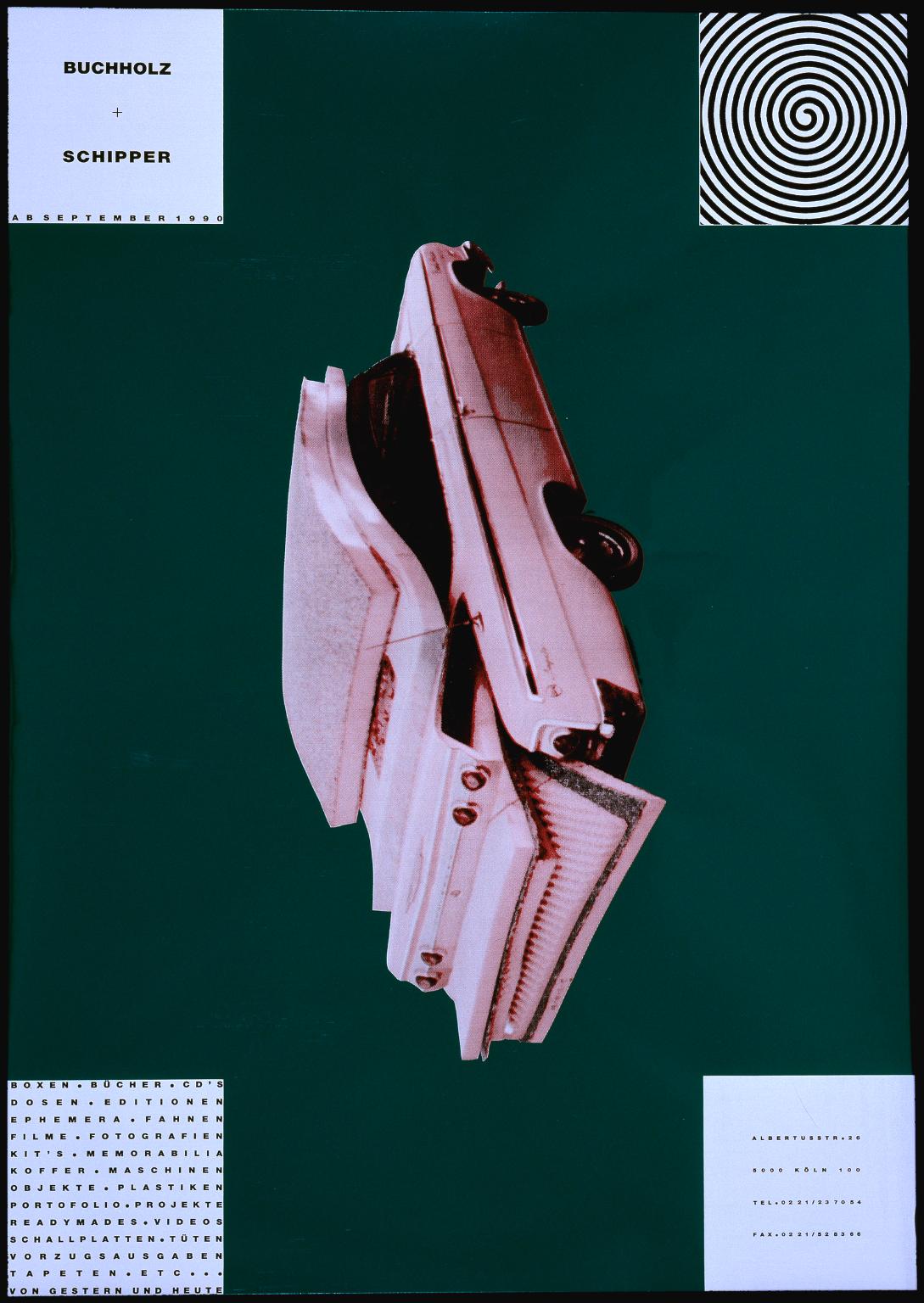
Martin Kippenberger, Buchholz Schipper 1990
German artist Martin Kippenberger produced this poster in 1990. Daniel Buchholz and Esther Schipper were two dealers and gallery owners active in the Cologne art scene during this period.
9/26
artworks in Young-Hae Chang Heavy Industries
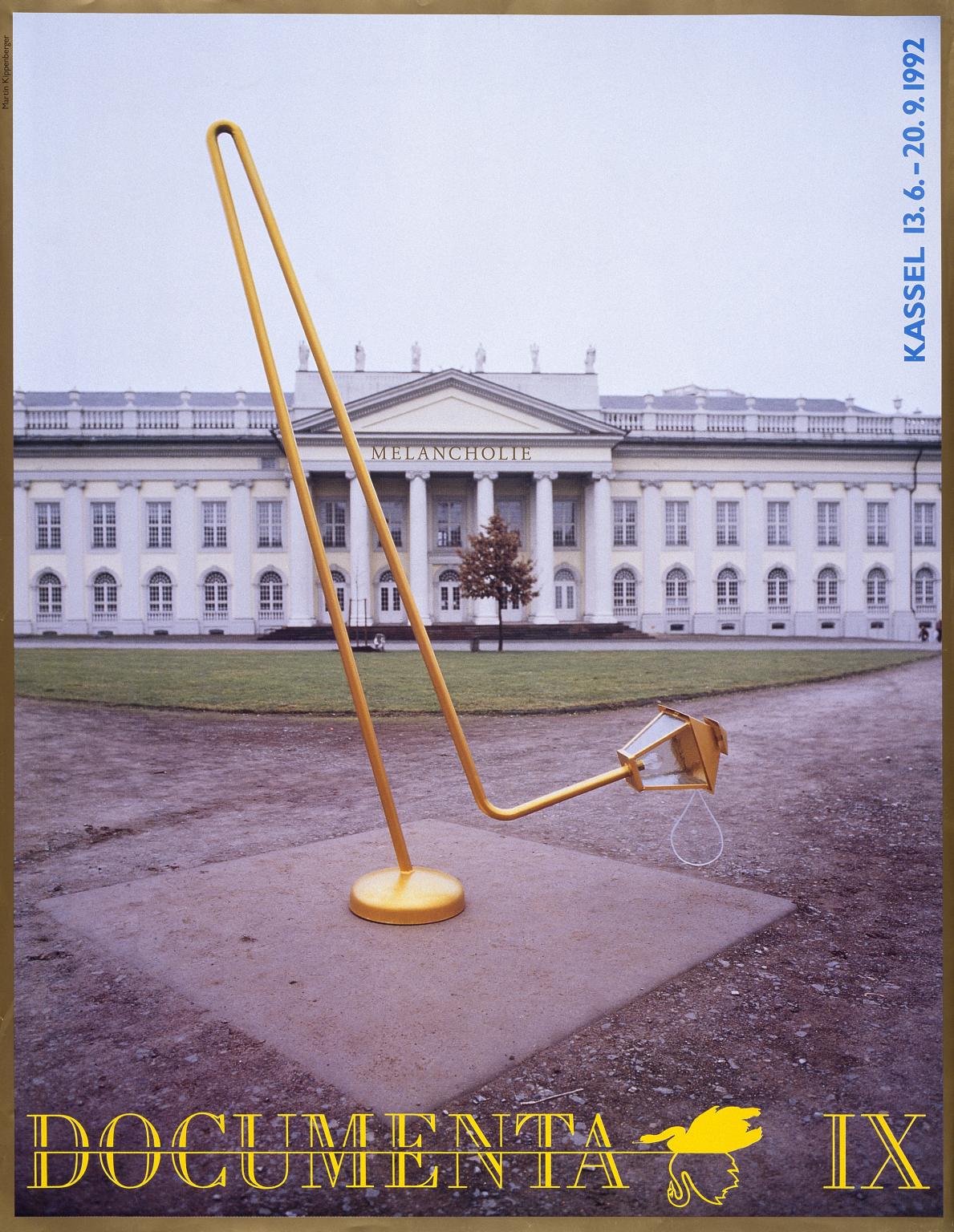
Martin Kippenberger, Melancholy 1992
This poster was produced by German artist Martin Kippenberger on the occasion of the exhibition Documenta IX in Kassel in 1992.
10/26
artworks in Young-Hae Chang Heavy Industries
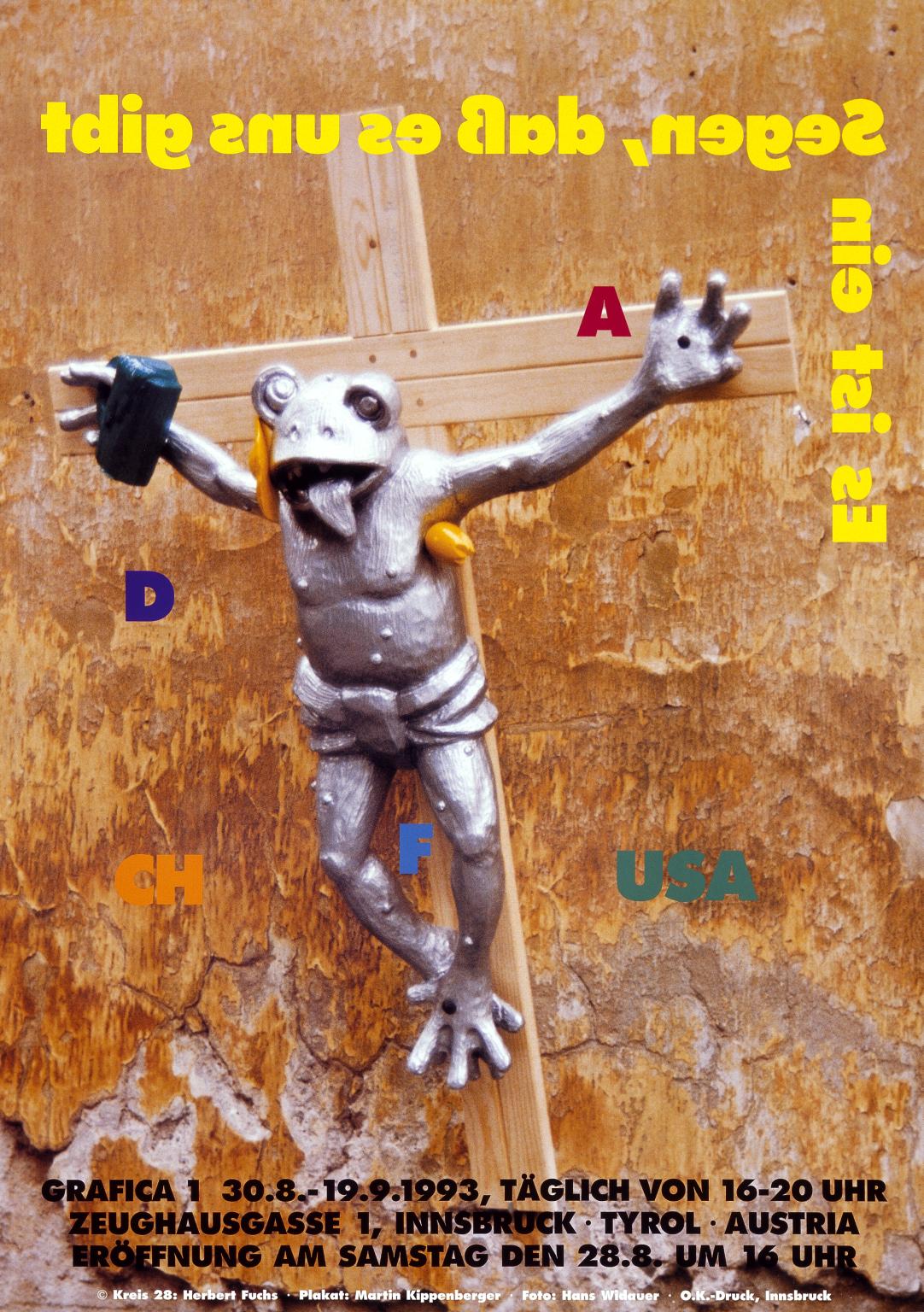
Martin Kippenberger, Graphics I 1993
German artist Martin Kippenberger designed this poster on the occasion of an exhibition of graphic work by an international group of artists, staged in Innsbruck, Austria, in 1993. The reversed text reads ‘Es ist ein Segen, daß es uns gibt’ (It is a blessing that we exist), along with letters referring to the countries represented.
11/26
artworks in Young-Hae Chang Heavy Industries
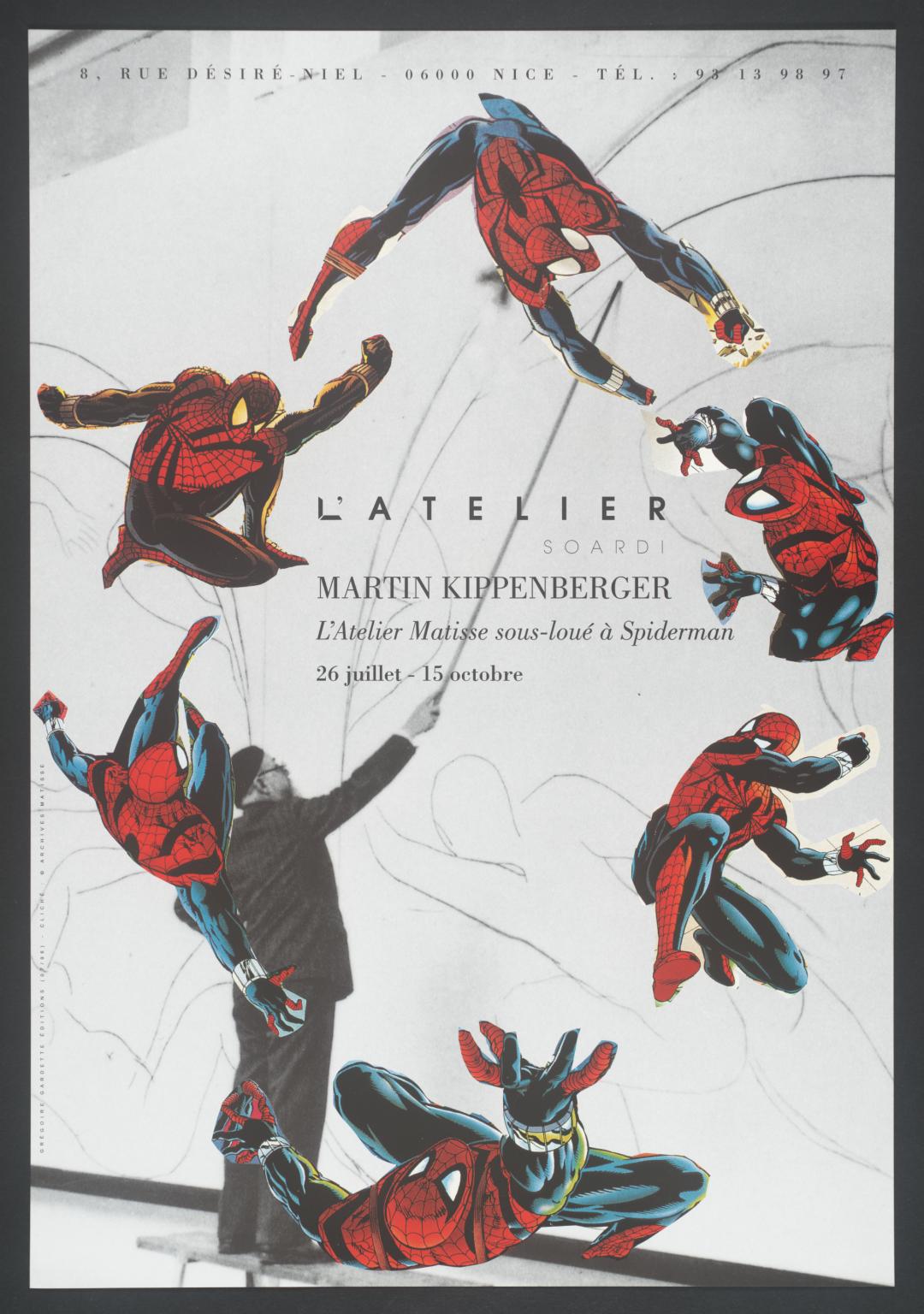
Martin Kippenberger, Matisse’s Studio Sublet to Spiderman 1996
This poster was produced by German artist Martin Kippenberger on the occasion of an exhibition staged at L’Atelier Soardi, Nice, in 1996.
12/26
artworks in Young-Hae Chang Heavy Industries

Martin Kippenberger, Kippenberger / Géricault Memento Metropolis 1996
German artist Martin Kippenberger produced this poster on the occasion of his exhibition of the same name, held at the Hessenhuis in Antwerp, between February and May 1997. The exhibition comprised two parts: in one room Kippenberger reconstructed his 1994 installation The Happy End of Franz Kafka’s America (see Tate P79164), while in another he displayed a series of newly-made paintings and drawings based on Théodore Géricault’s 1819 painting The Raft of the Medusa, together with a copy of the painting made in 1860 by Pierre-Désiré Guillemet and Etienne-Antoine-Eugène Ronjat. Kippenberger’s poster recreates the split nature of the exhibition, showing elongated photographs of the two rooms side by side.
13/26
artworks in Young-Hae Chang Heavy Industries
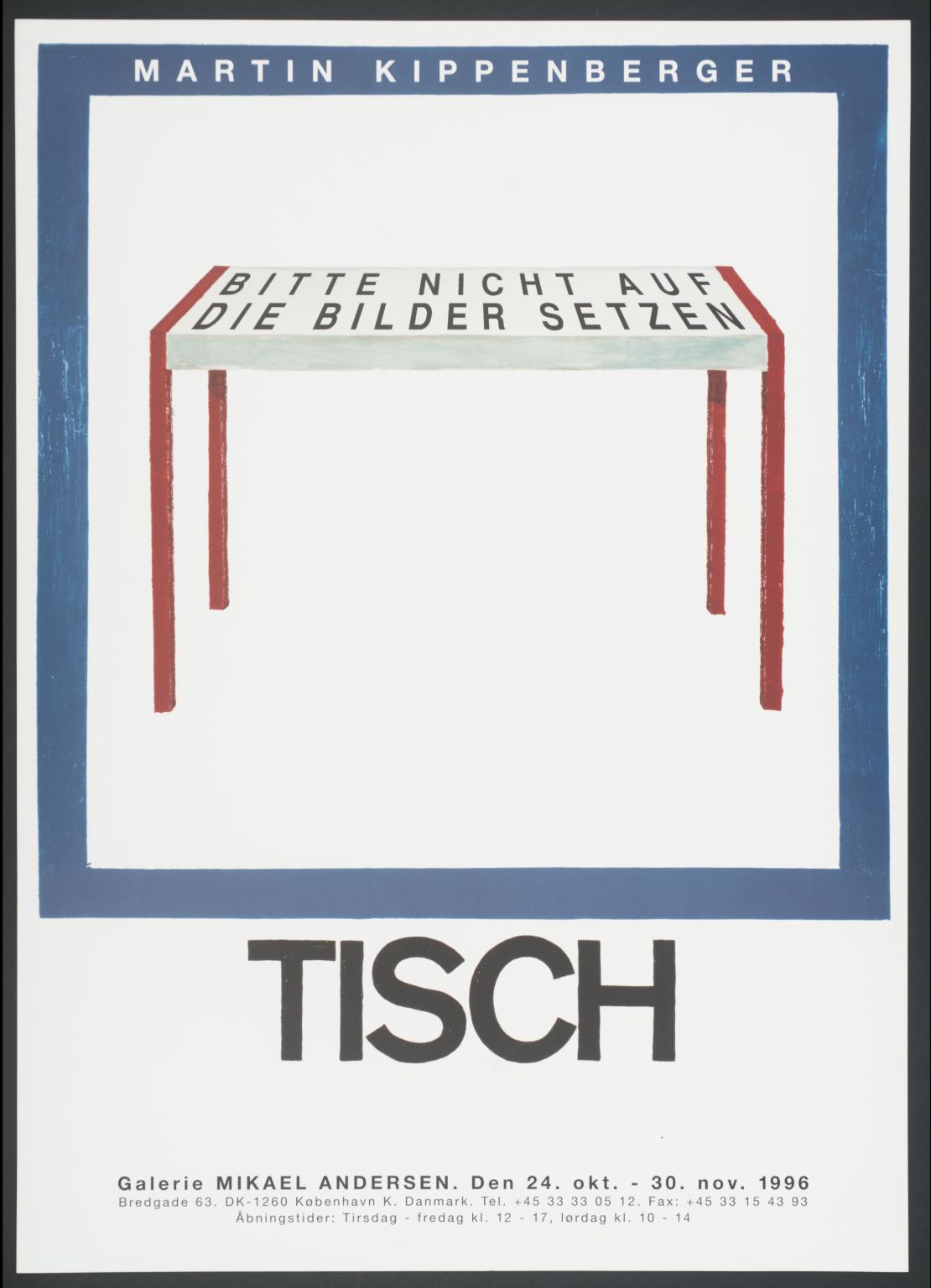
Martin Kippenberger, Please don’t sit on the Pictures 1996
This poster was produced by German artist Martin Kippenberger on the occasion of an exhibition held at Galerie Mikael Anderson, Copenhagen, in 1996.
14/26
artworks in Young-Hae Chang Heavy Industries
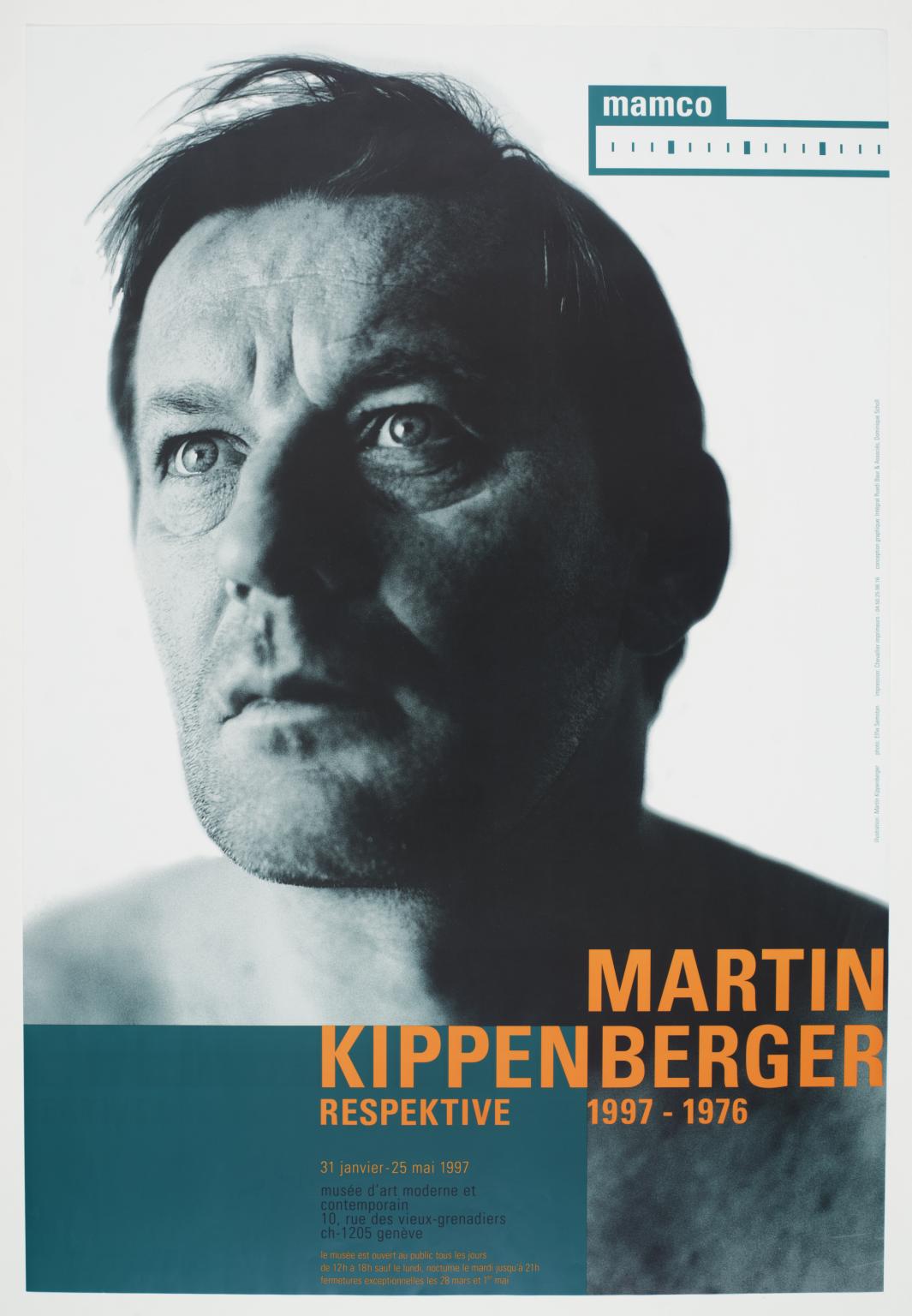
Martin Kippenberger, Respective 1997 - 1976 1997
German artist Martin Kippenberger produced this poster on the occasion of his exhibition Respektive, held at the Museum of Modern and Contemporary Art in Geneva, Switzerland, between January and May 1997. Although the show succeeded in presenting a review of his career, and despite the fact that Kippenberger was terminally ill with cancer when the show opened, the artist steadfastly refused to take the notion of his own retrospective seriously: the title is Respective rather than ‘Retrospective’, the dates of his career have been reversed, and the close-up photograph of his face consciously theatrical.
15/26
artworks in Young-Hae Chang Heavy Industries
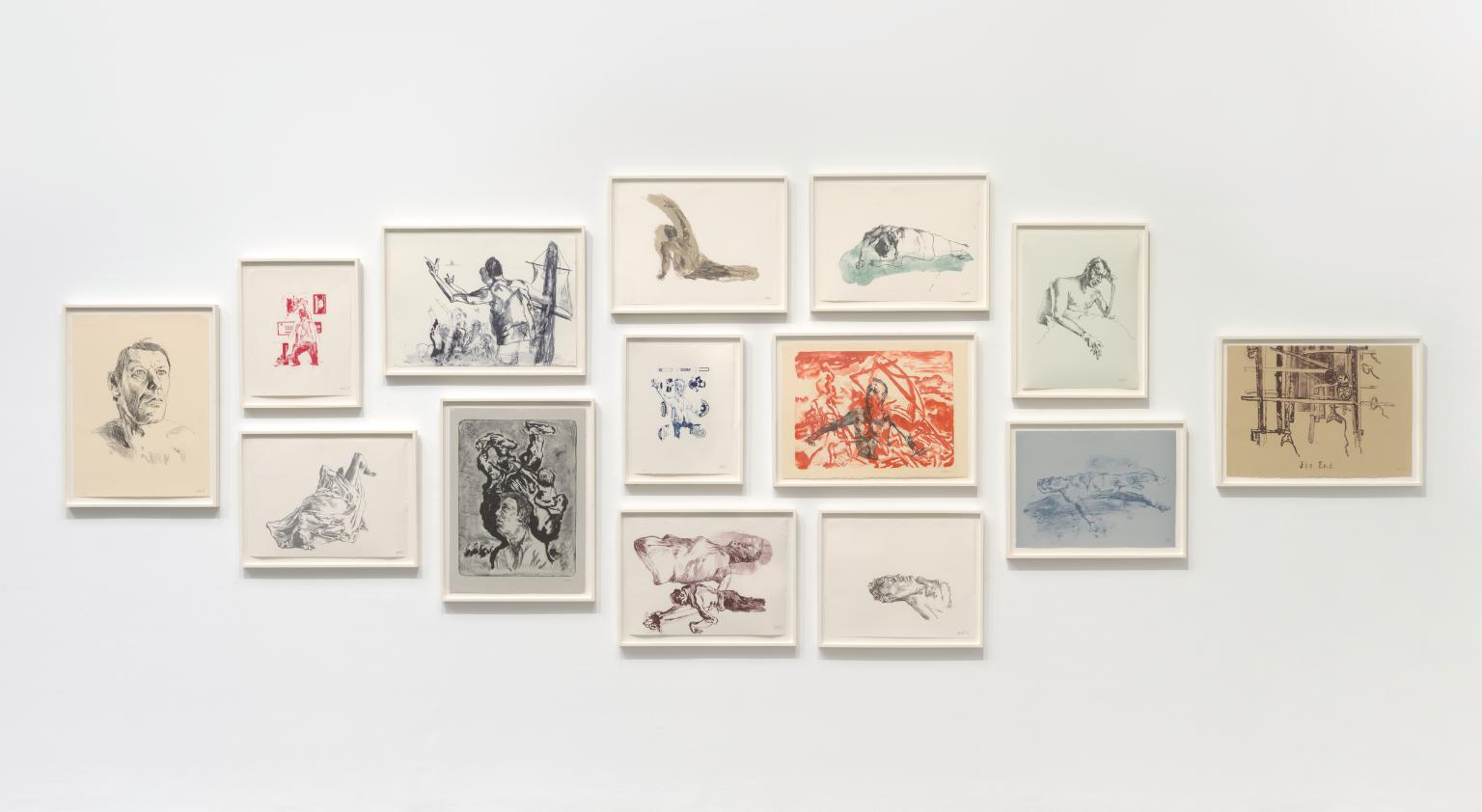
Martin Kippenberger, The Raft of Medusa 1996
To create this series, Kippenberger’s wife, the photographer Elfie Semotan, took pictures of him copying the poses of figures from Théodore Géricault’s painting The Raft of the Medusa 1818–9. Kippenberger then produced these prints from the photographs. Géricault’s work references the threat of death but also the chance of salvation – the shipwrecked sailors are about to be rescued. Kippenberger made the series around the time he was diagnosed with liver cancer. Semotan recalled that during the photoshoot Kippenberger ‘totally opened up and let everything out, everything that had hurt him in his life, and in the thought it could be all over.’
Gallery label, August 2024
16/26
artworks in Young-Hae Chang Heavy Industries

Martin Kippenberger, Fred the Frog Rings the Bell 1990
Fred the Frog was an alter-ego of Kippenberger’s. Between 1988–92 he made a number of paintings and sculptures based on the character, including this work. With its beer jug and juvenile expression, Kippenberger intended this to be crude and provocative, deliberately leaving both himself and his creation Fred the Frog open to criticism. However, because the frog serves as a metaphor for the artist, Kippenberger in effect crucified himself before he could be crucified by his critics.
Gallery label, August 2024
17/26
artworks in Young-Hae Chang Heavy Industries
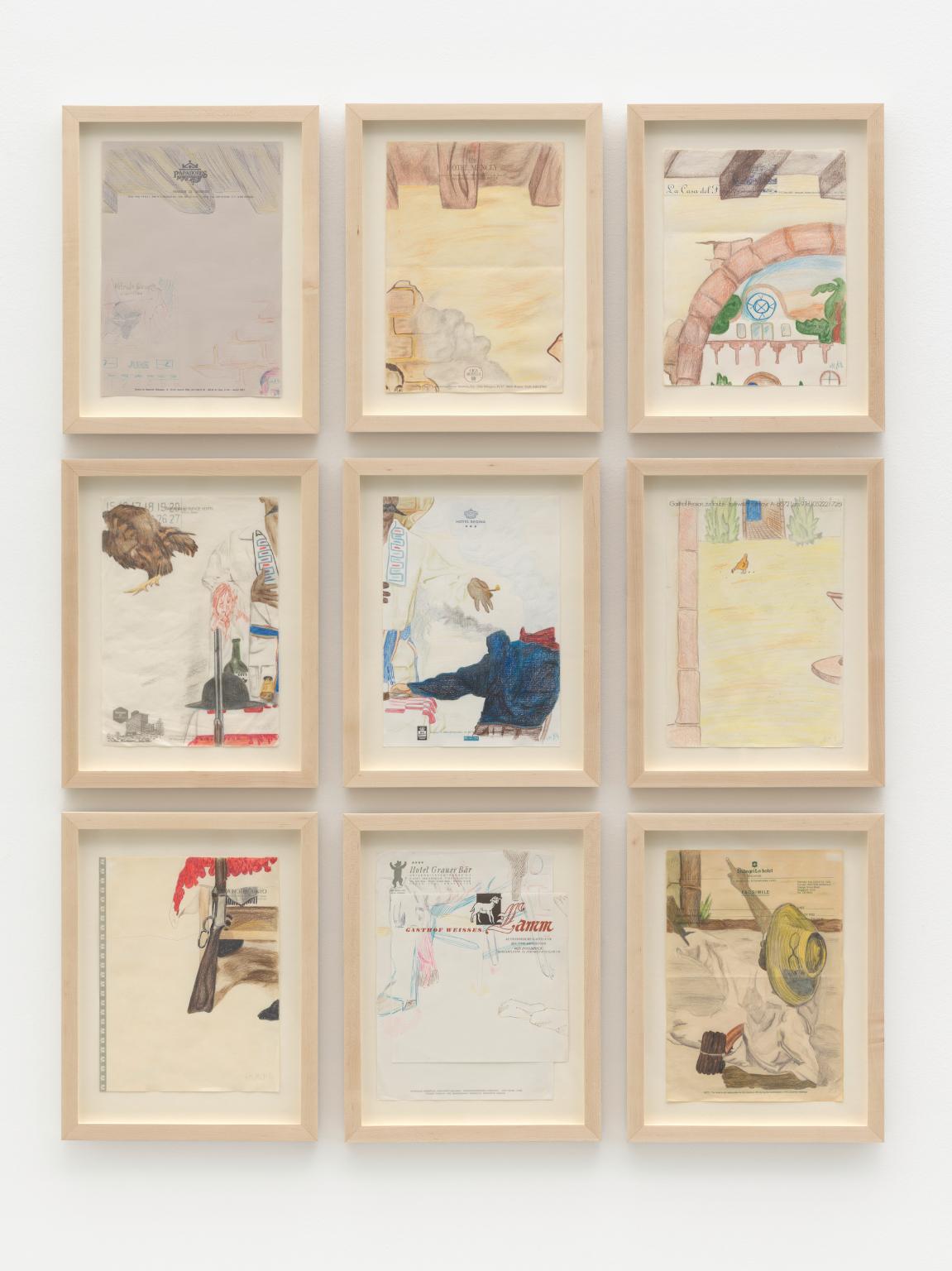
Martin Kippenberger, Untitled (Invention of a Joke) 1991
Kippenberger lived in Los Angeles from 1989-90. This experience may have helped inspire the Mexican setting here. In this raucous scene, a lit match appears to have caused the seated man’s head to explode, while in the top left drawing, a calendar on the wall advertises ‘Alfredo Garcia cigarillos’, a reference to the 1974 film Bring me the Head of Alfredo Garcia. These works are an example of Kippenberger’s habit of using hotel stationery he collected for drawing.
Gallery label, August 2024
18/26
artworks in Young-Hae Chang Heavy Industries
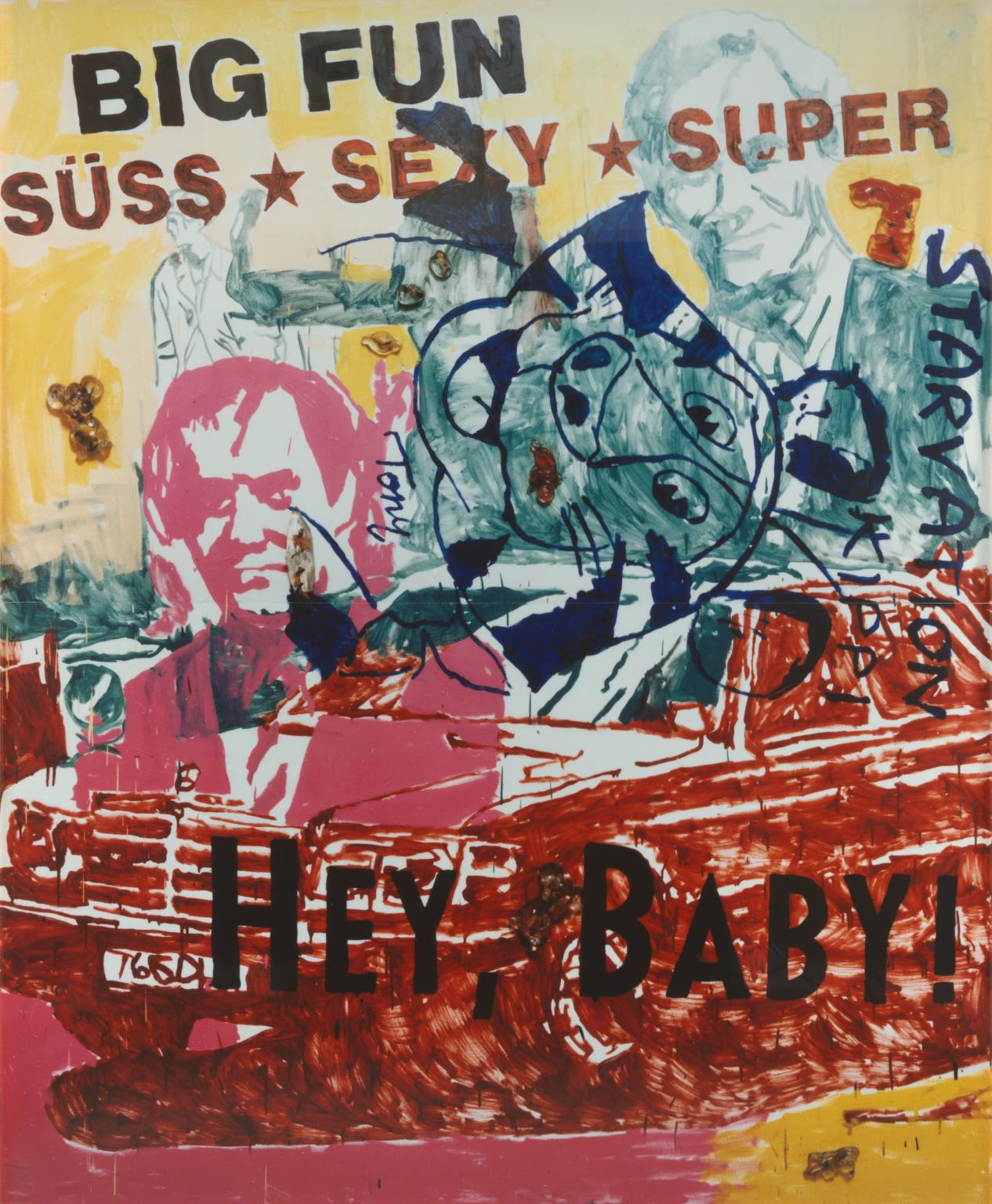
Martin Kippenberger, Untitled from the Heavy Burschi series 1989
For this series, Kippenberger asked one of his assistants, Merlin Carpenter, to create paintings based on images in his exhibition catalogues. Kippenberger felt the final works were ‘just too good, too skilful, and therefore too much kitsch’. He then had them destroyed and exhibited in a skip, but not before creating a photograph of each painting, including this one. Here, Carpenter included two portraits of Kippenberger, as well as words and images copied from books and magazines. Another of Kippenberger’s assistants, Ulrich Strothjohann, made semi-transparent toy-like figures stuffed with kippen (cigarette ends) that can be seen stuck to the painting’s surface.
Gallery label, February 2025
19/26
artworks in Young-Hae Chang Heavy Industries
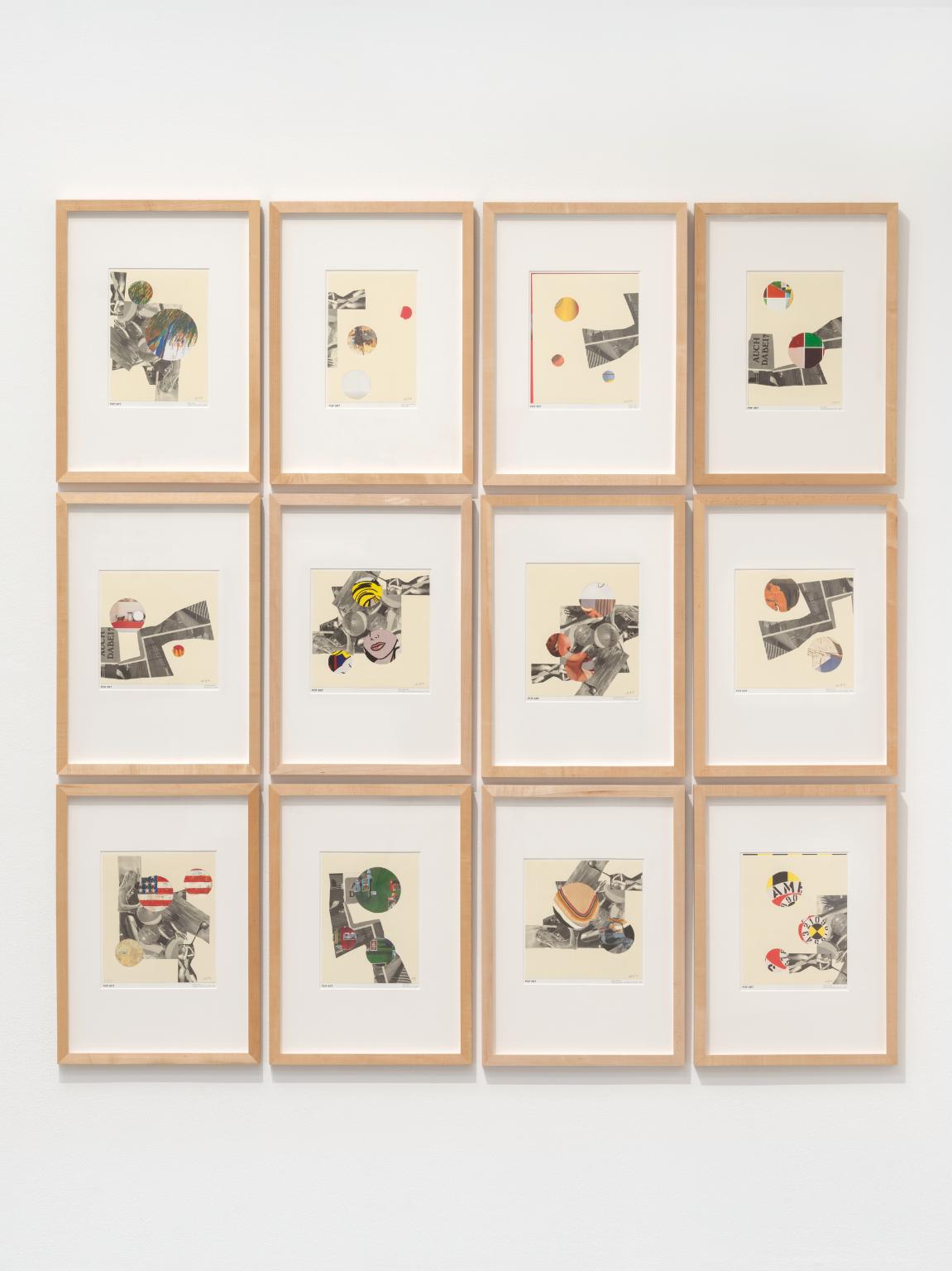
Martin Kippenberger, Pop Art Calendar 1991
Kippenberger made these collages from images of other artists’ works and magazine photographs. The top layer is made up of black and white photos from a naturist magazine. The artist cut holes into this and layered colour images of pop art works underneath. The 12 images, one for each month, were taken from a calendar produced by Deutsche Bank for its corporate clients.
Gallery label, August 2024
20/26
artworks in Young-Hae Chang Heavy Industries

Martin Kippenberger, This Band is Playing on Luxus 1979
This poster was produced in 1979 to promote ‘Luxus’, the first single of German artist Martin Kippenberger’s punk band Grugas. The four band members appear in the photograph: Kippenberger, Eric Mitchell, Akim Schaechtele and Christine Hahn.
21/26
artworks in Young-Hae Chang Heavy Industries
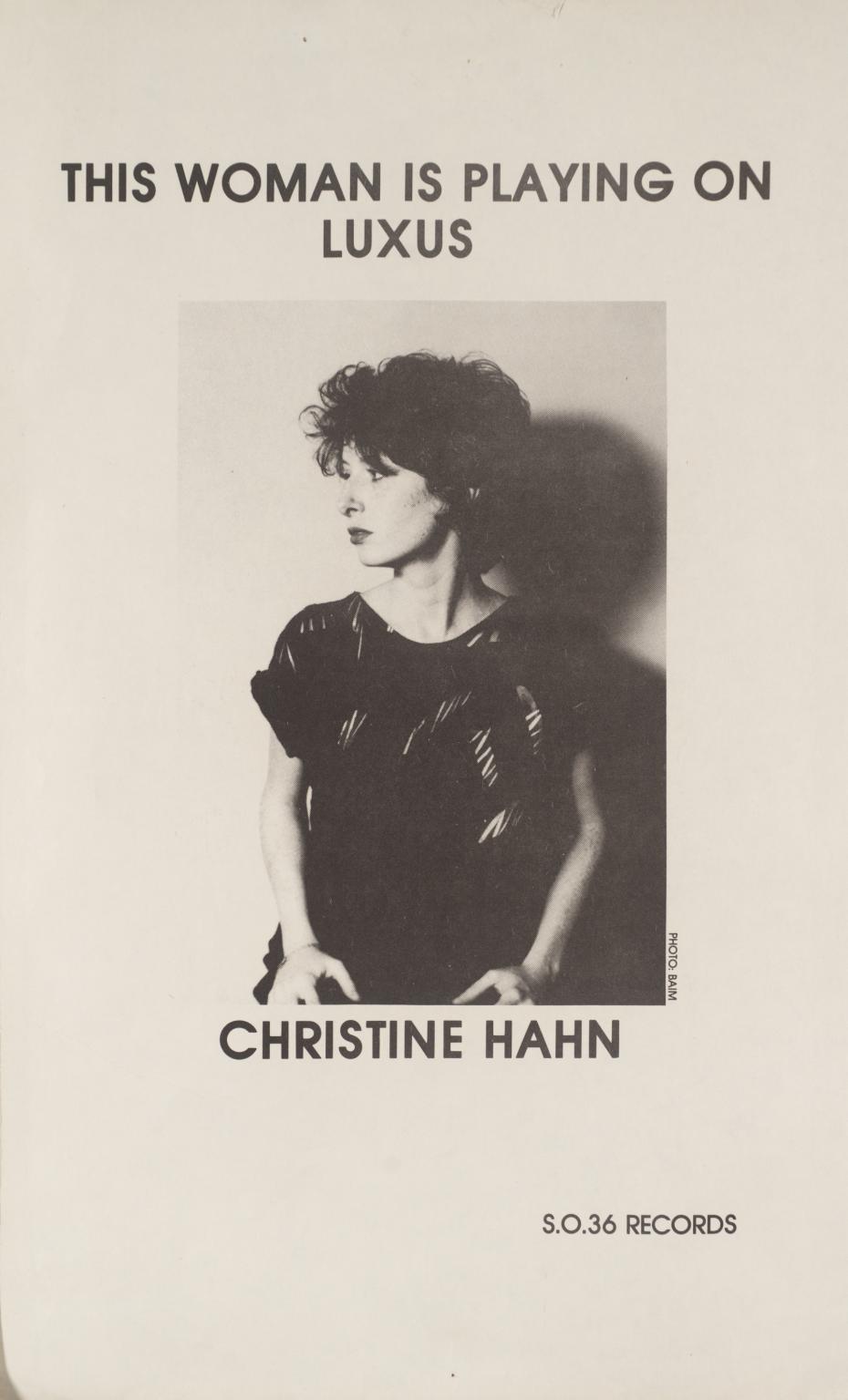
Martin Kippenberger, This Woman is Playing on Luxus 1979
This poster was produced in 1979 to promote ‘Luxus’, the first single of German artist Martin Kippenberger’s punk band Grugas. The ‘woman’ depicted is Kippenberger’s fellow band member Christine Hahn.
22/26
artworks in Young-Hae Chang Heavy Industries
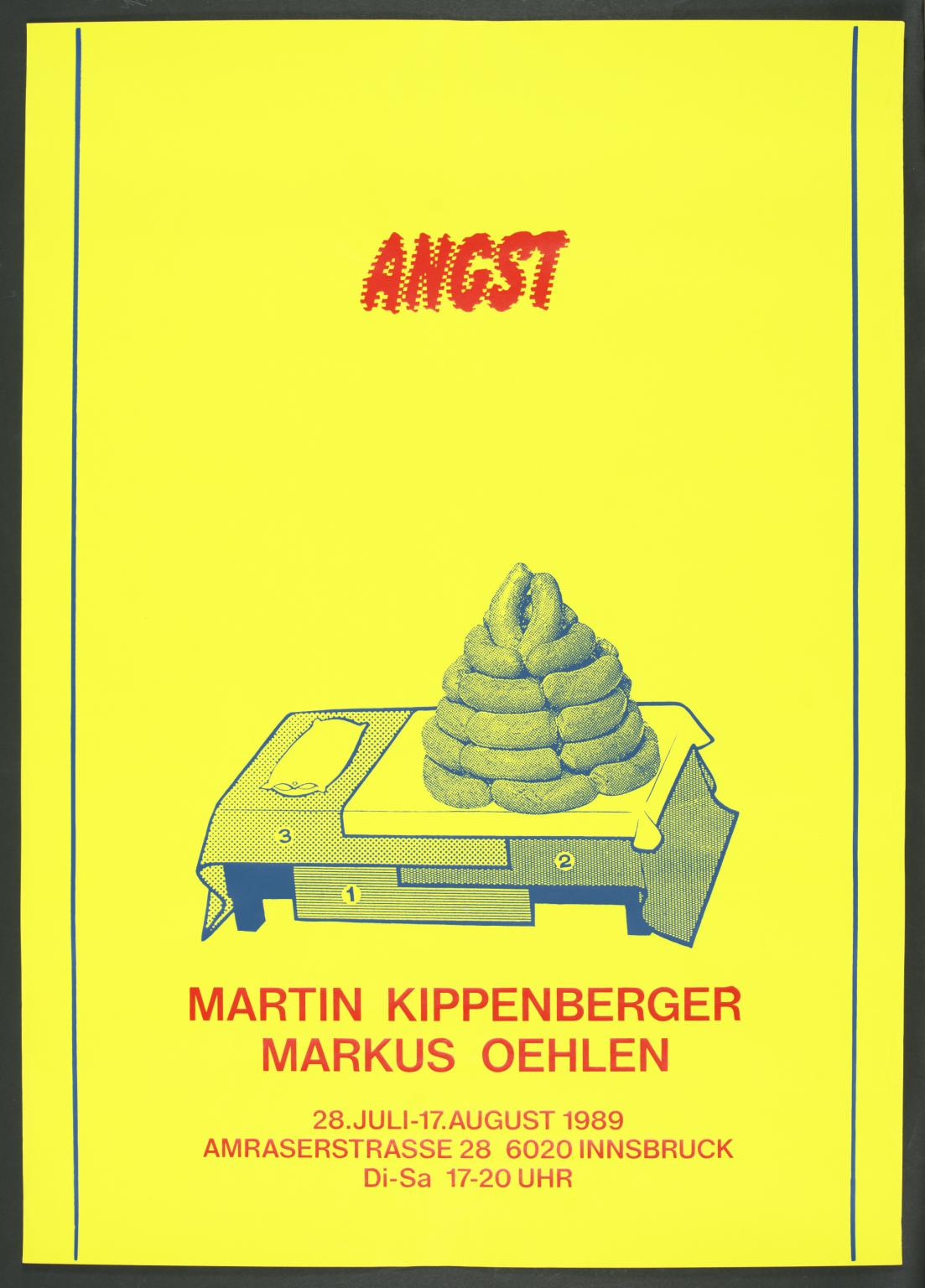
Martin Kippenberger, Anxiety 1989
German artist Martin Kippenberger produced this poster on the occasion of the exhibition Anxiety, staged with fellow artist Markus Oehlen in Innsbruck, Austria, in the summer of 1989.
23/26
artworks in Young-Hae Chang Heavy Industries
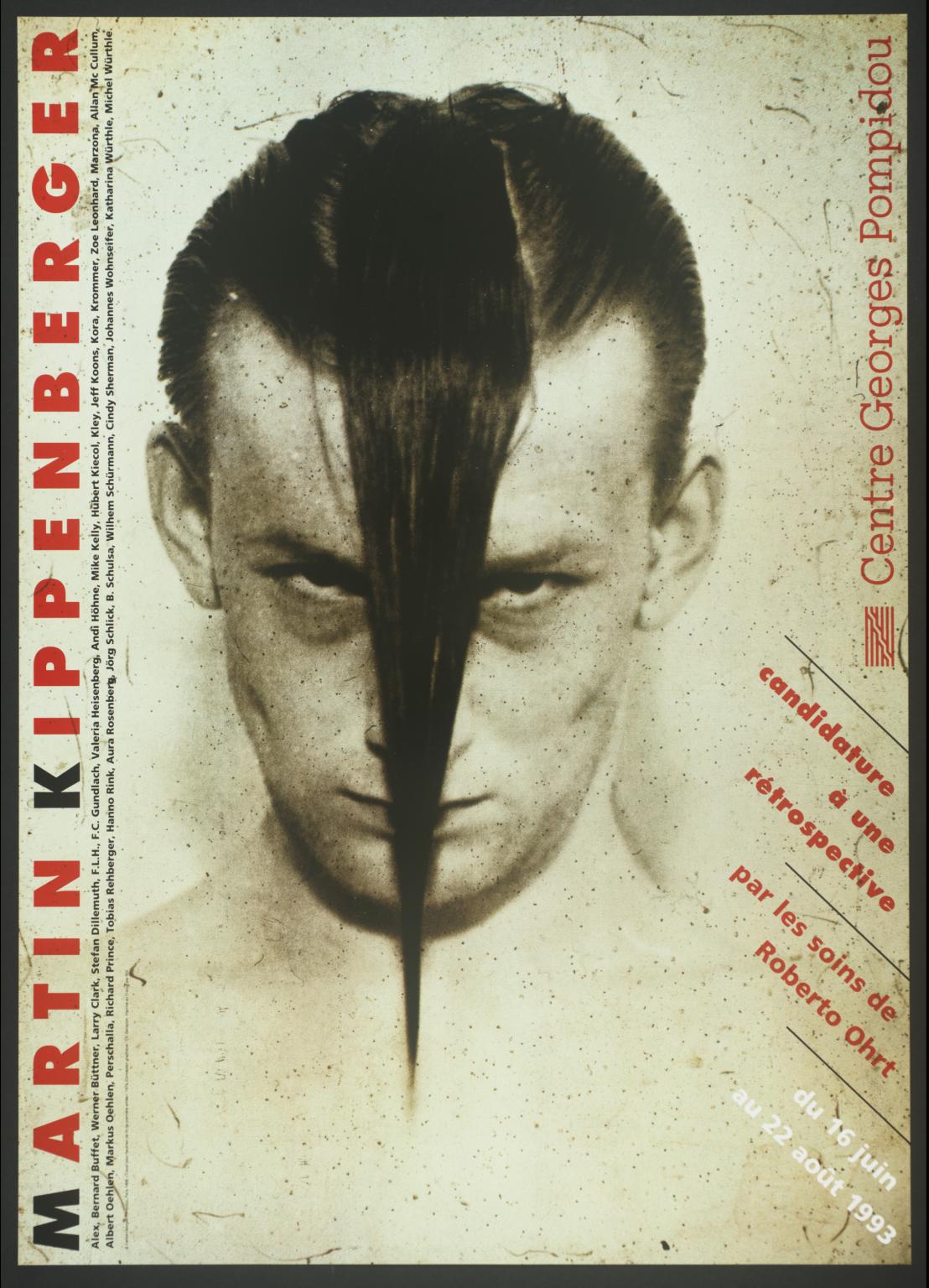
Martin Kippenberger, Candidature for a Retrospective 1993
This poster was one of two designs made by German artist Martin Kippenberger to accompany his exhibition of the same name, held at the Centre Pompidou, Paris, in the summer of 1993 (see also Candidature for a Retrospective 1993, Tate P79160).
24/26
artworks in Young-Hae Chang Heavy Industries

Martin Kippenberger, Happy to be Gay 1993
German artist Martin Kippenberger produced this poster in 1993 at a time when the artist was actively involved in raising awareness of the AIDS pandemic in Europe and the United States (for example, Kippenberger participated in the group show Drawing the Line Against AIDS at the AMFAR International in New York in the same year).
25/26
artworks in Young-Hae Chang Heavy Industries

Martin Kippenberger, The Eggman and his Outriggers 1997
The Eggman and His Outriggers was the title of an exhibition held at the Städtisches Museum Abteiberg in Mönchengladbach, Germany, between February and April 1997, and was Martin Kippenberger’s last exhibition before he died in March that year. Organised around the theme of the egg, the exhibition featured works of art as well as found and collected objects, many of which were displayed in glass vitrines that made reference to the work of another German artist Joseph Beuys (1921–1986).
26/26
artworks in Young-Hae Chang Heavy Industries
Art in this room


























You've viewed 6/26 artworks
You've viewed 26/26 artworks
